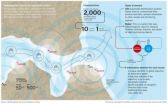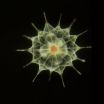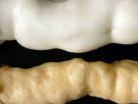(Press-News.org) DURHAM, N.C. – Most doctors are spending a good deal of time counseling their patients about diet and weight loss, but for the most part, it isn't making any difference, according to a new study appearing in the American Journal of Preventive Medicine.
Duke University Medical Center researchers recorded the conversations between 40 primary care physicians and 461 of their overweight or obese patients over an 18-month period. Investigators didn't tell them what they were listening for – only that they wanted to record the encounters to see how doctors talked about health. What they were really tracking, however, was how much time was spent and, specifically, how doctors talked with their patients about diet, exercise and weight loss.
Turns out, doctors talk about weight quite a bit. Physicians discussed weight with patients in 69 percent of the encounters.
"We found that on average, physicians spent about three and a half minutes talking about diet and weight loss," says Kathryn Pollak, PhD, a member of the Cancer Prevention Program in the Duke Comprehensive Cancer Center and the lead author of the study. "That may not sound like much, but it amounts to about 15 percent of the time of the average office visit, which ran about 20 minutes. So the good news is, physicians realize how important the issue is, and they are making a point to talk about it."
But the data showed that there was no difference in weight loss between those patients who received counseling and those who did not get it.
Investigators found a very different story, however, when they dug a little deeper and divided the doctors and their patients into groups according to communication styles.
They found that three months after the office visit, patients whose doctors talked about diet and weight loss in a more motivational fashion – using predominantly reflective or empathic statements -- were much more likely to lose weight, compared to those whose physicians used a more judgmental or confrontational style of communication. Patients whose physicians communicated well lost about 3.5 pounds three months after the visit, which is substantial given most overweight and obese patients gain weight over time, says Pollak.
"Patients don't like to be told what to do, and they are generally not going to question or talk back to their doctor," says Pollak. "But what happens when doctors use reflective statements or a more motivational and empathic approach, it changes the relationship; the patient becomes more of an equal, more of a partner in care."
"So, for example, instead of asking a question like 'So, you can't fit exercise into your day?' a physician might say something like 'It sounds like you're finding it hard to find time to exercise.' That kind of reflection seems to help patients open up more and give more meaningful information to doctors."
Just over a third of the physicians in the study reported having some training in behavioral counseling, and Pollak says such instruction is becoming a higher priority item in traditional medical education.
She says the study is the largest of its kind and the first to examine not only the frequency of diet and weight counseling in physician office visits, but also the quality of the counseling and its impact on patients.
"Results of the study indicate that physicians may indeed have the power to help patients change their eating and exercise habits," says Pollak.
She says future research should examine whether weight loss that resulted from the sessions can be maintained over time, and whether improving physicians' training in behavioral communications would lead to more effective counseling and even greater weight loss.
INFORMATION:
The research was supported from grants from the National Cancer Institute
and the Department of Veterans Affairs.
Duke colleagues who contributed to the study include Stewart Alexander, Cynthia Coffman, James Tulsky, Pauline Lyna, Rowena Dolor, Iguehi James, Rebecca Brouwer, Justin Manusov and Truls Ostbye.
When docs counsel weight loss, it's style that makes a difference
2010-10-05
ELSE PRESS RELEASES FROM THIS DATE:
Researchers find possible biomarker to identify seizure-related stress
2010-10-05
PROVIDENCE, RI -- New research from Rhode Island Hospital found that reduced levels of brain-derived neurotrophic factor (BDNF), a protein in the brain that encourages growth of neurons, may be a trait marker for individuals with psychogenic non-epileptic seizures (PNES) (seizures that are psychological in origin). The findings are published in the October 4, 2010, issue of Neurology, the medical journal of the American Academy of Neurology.
Past studies have shown decreased levels of BDNF in the serum of patients with psychiatric disorders such as major depressive disorder ...
An intelligent system for maritime surveillance has been created
2010-10-05
The system has been designed by scientists from this Madrid university for Núcleo CC, a company which develops surveillance systems for the maritime and aeronautic sectors. The first prototype will be used in the near future in Cape Verde (Africa). Two types of sensors have been deployed there: a set of radars and a series of AIS (Automatic Identification System), which allow ships to communicate their position and give other relevant data on their location and characteristics. These two types of sensors offer complementary data which can be fused in order to obtain better ...
MBL scientists reveal findings of World Ocean Microbe Census
2010-10-05
LONDON, UK—After a decade of joint work and scientific adventure, marine explorers from more than 80 countries, including six scientists from the Marine Biological Laboratory (MBL), today delivered the first global Census of Marine Life revealing what, where, and how much lives and hides in the world's oceans. In one of the largest scientific collaborations ever conducted, more than 2,700 scientists spent over 9,000 days at sea on more than 540 expeditions gathering the data.
As a result of these efforts the scientists discovered that there may be up to 1 billion kinds ...
New report examines university management of intellectual property
2010-10-05
WASHINGTON — The system put in place by the Bayh-Dole Act of 1980 -- which gives universities significant control over intellectual property associated with the results of federally funded research at their institutions – has been more effective than the pre-1980 system in making research advances available to the public and spurring innovation, says a new report from the National Research Council. Nevertheless, the current system needs improvement, said the committee that wrote the report.
"The public investment in research universities has led to a great deal of new ...
Surprise: Scientists discover that inflammation helps to heal wounds
2010-10-05
A new research study published in The FASEB Journal (http://www.fasebj.org) may change how sports injuries involving muscle tissue are treated, as well as how much patient monitoring is necessary when potent anti-inflammatory drugs are prescribed for a long time. That's because the study shows for the first time that inflammation actually helps to heal damaged muscle tissue, turning conventional wisdom on its head that inflammation must be largely controlled to encourage healing. These findings could lead to new therapies for acute muscle injuries caused by trauma, chemicals, ...
Technology transfer and postdoc entrepreneurs
2010-10-05
Post-doctoral researchers see their role as being vital in technology transfer where scientific findings become useful to the local economy, but most have little interest in running their own business once their research fellowship ends. That's the surprising finding of a study published in the International Journal of Knowledge-Based Development.
Edmund Zolnik, a public policy specialist at the George Mason University, in Arlington, Virginia, has surveyed postdoctoral fellows in the US National Capital Region. He found that most saw technology transfer as an important ...
Mechanism involved in addictions and some forms of obesity discovered in U of A lab
2010-10-05
A researcher from the Faculty of Medicine & Dentistry at the University of Alberta has discovered a mechanism underlying some forms of obesity and addictions which could lead to a treatment for both diseases.
When a hungry animal finds food in the wild, it is a rewarding stimulus for the animal and is recognized by the brain by the release of the chemical messenger dopamine. Because narcotics such as cocaine, heroin and amphetamines, and even tasty and highly-caloric foods also cause the release of dopamine and therefore make people feel rewarded, it's clear that dopamine ...
Using cassava to address vitamin A deficiency
2010-10-05
The roots of cassava (Manihot esculenta) serve as the primary source of carbohydrates in the diets of people in many arid regions of the world, including more than 250 million people in sub-Saharan Africa. Unfortunately the roots of commercial cassava cultivars are quite low in micronutrients, and micronutrient deficiencies are widespread in these regions. In addition to programs designed to deliver vitamin supplements, there has been considerable effort aimed at biofortification; that is, increasing the amounts of available micronutrients in staple crops such as cassava. ...
John Theurer Cancer Center to present innovative research at 2 surgical meetings
2010-10-05
HACKENSACK, N.J. (October 4, 2010) — James C. Wittig, M.D. and colleagues will conduct a total of eight research presentations at the upcoming 96th Annual Clinical Congress of the American College of Surgeons and the 65th Annual Meeting of the American Society for Surgery of the Hand. Dr. Wittig, an orthopedic oncologist with extensive experience in performing limb-sparing surgeries, is Chief of the Division of Skin and Sarcoma Cancer of the John Theurer Cancer Center at Hackensack University Medical Center.
The presentations will focus on unique surgical techniques ...
First-of-its-kind study finds alarming increase in flow of water into oceans
2010-10-05
Irvine, Calif. — Freshwater is flowing into Earth's oceans in greater amounts every year, a team of researchers has found, thanks to more frequent and extreme storms linked to global warming. All told, 18 percent more water fed into the world's oceans from rivers and melting polar ice sheets in 2006 than in 1994, with an average annual rise of 1.5 percent.
"That might not sound like much – 1.5 percent a year – but after a few decades, it's huge," said Jay Famiglietti, UC Irvine Earth system science professor and principal investigator on the study, which will be published ...



